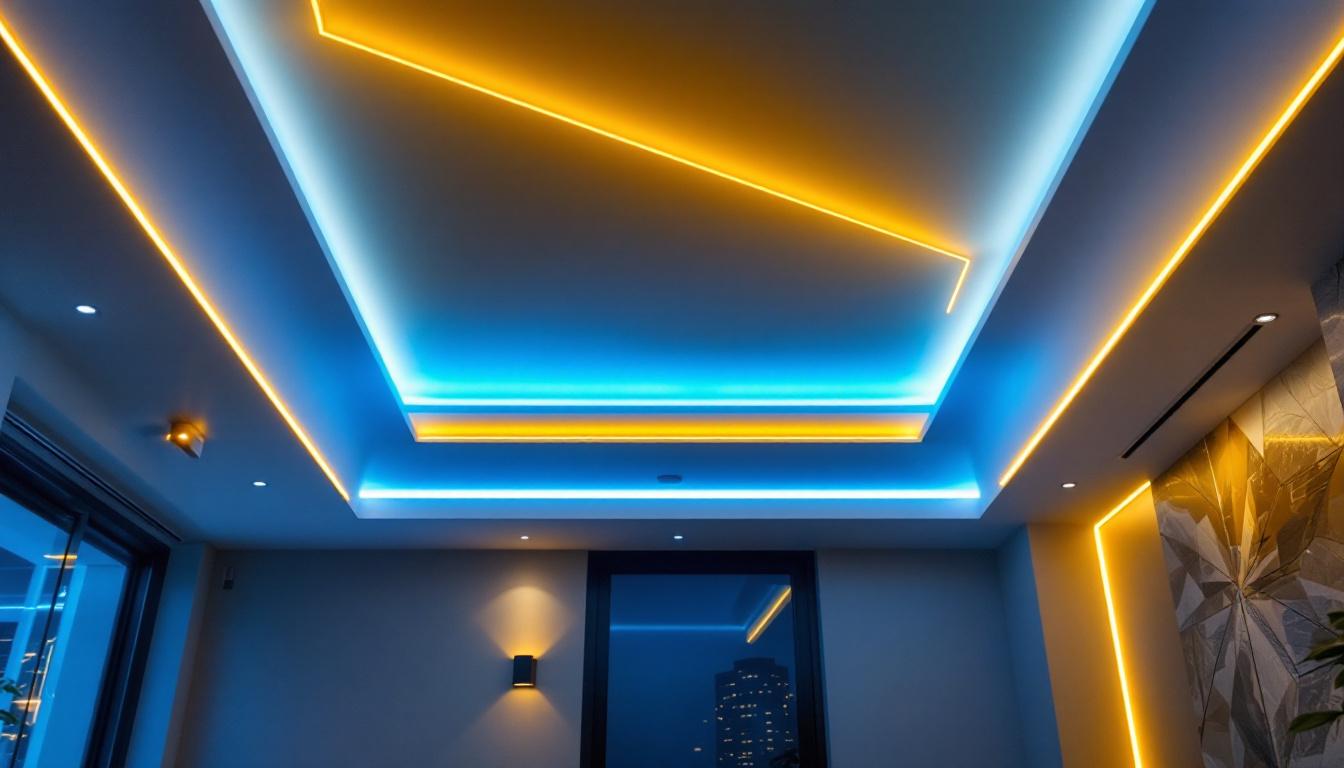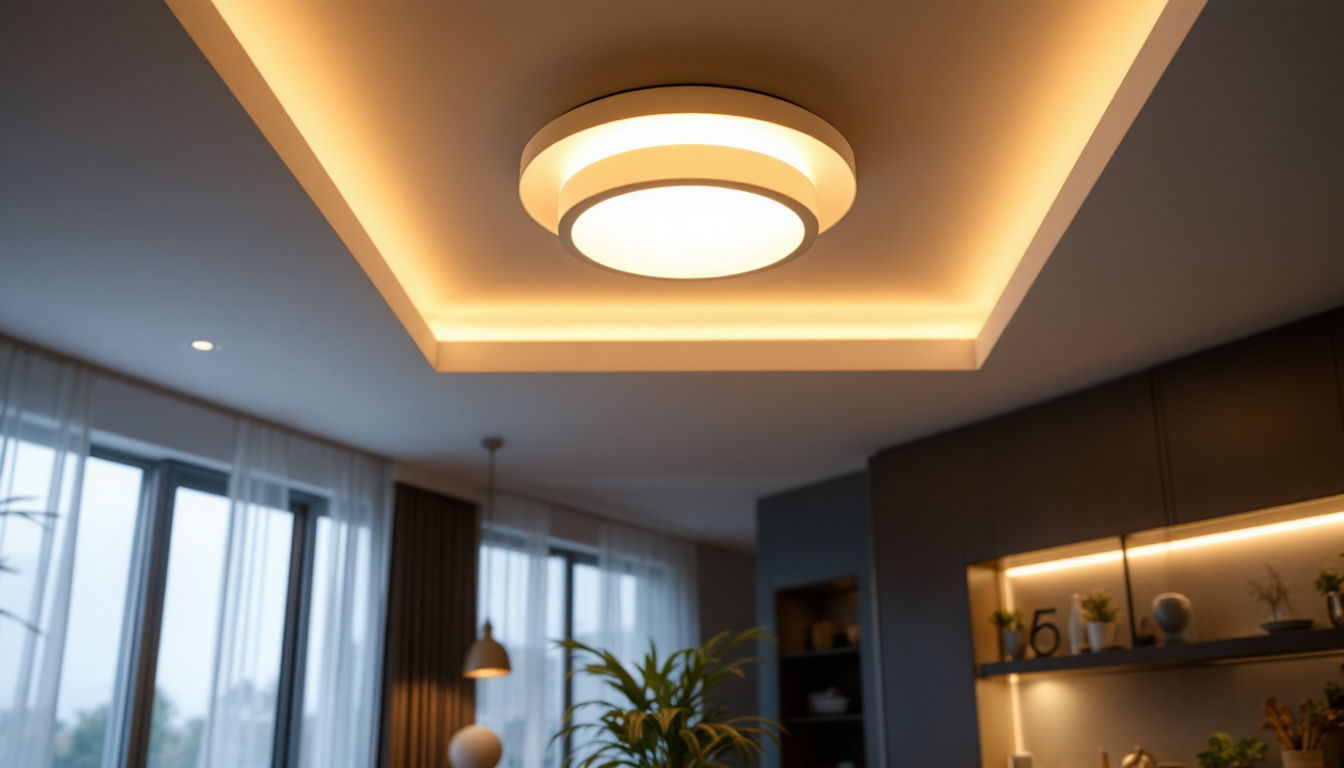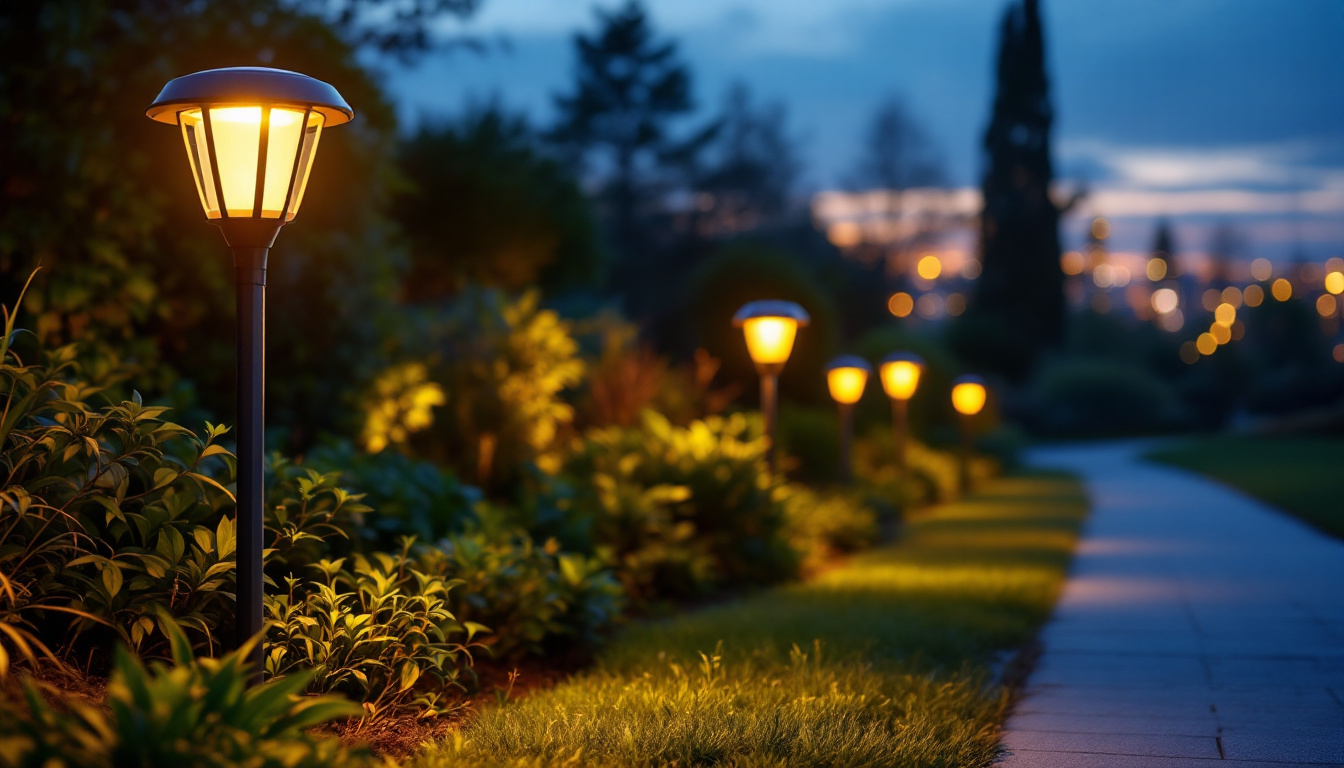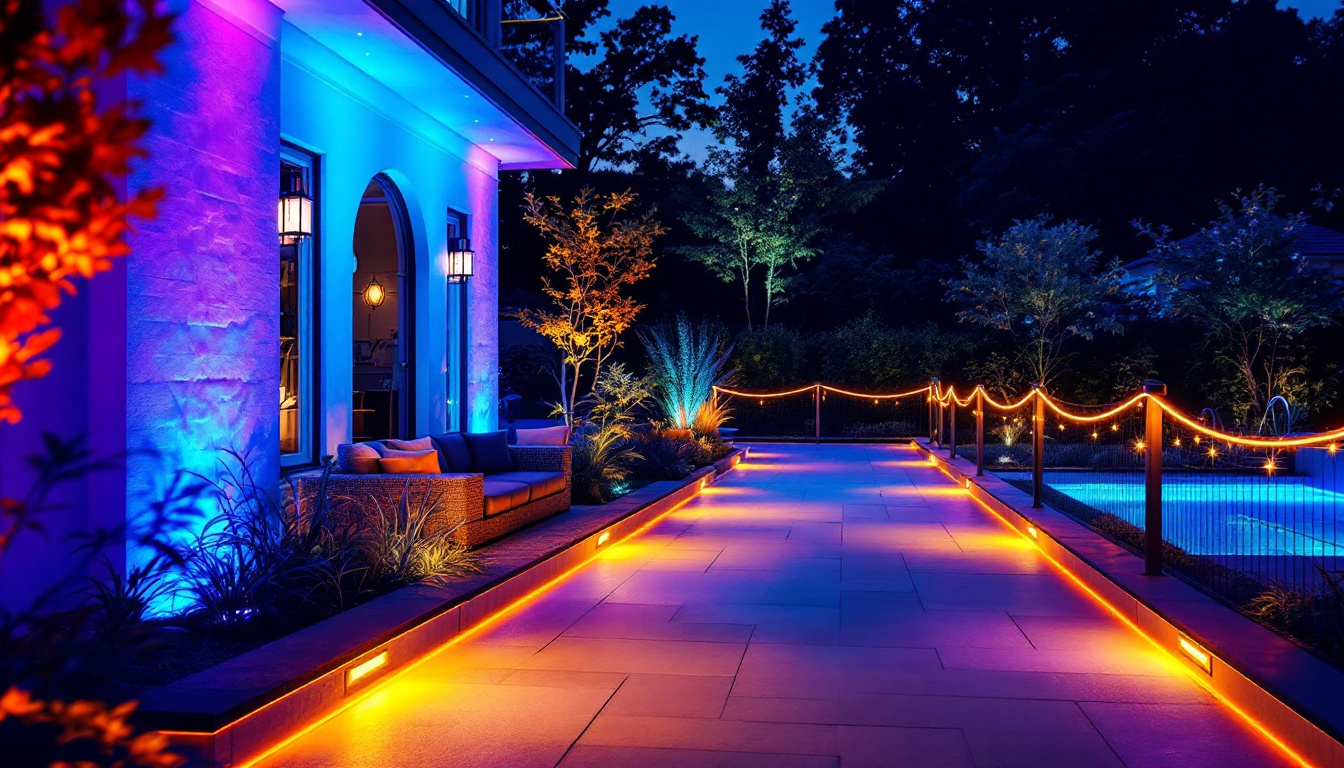
As the demand for innovative lighting solutions continues to rise, LED strip lights have emerged as a popular choice for both residential and commercial applications. Particularly, flush-mounted LED strip lights offer a sleek and modern aesthetic that appeals to many homeowners and designers. However, as lighting contractors, understanding the nuances of these products is essential to effectively meet client needs. This article addresses some of the most common questions lighting contractors have regarding LED strip lights for ceiling flush installations.
LED strip lights, also known as LED tape lights, are flexible circuit boards populated with light-emitting diodes (LEDs). They are available in various lengths, colors, and brightness levels, making them versatile for numerous applications. Their flexibility allows them to be installed in tight spaces and around corners, providing creative lighting solutions that traditional fixtures may not accommodate. With advancements in technology, many LED strip lights now come with features such as remote control and smart home integration, allowing users to adjust lighting settings with ease and convenience.
These lights can be used in various settings, including residential homes, commercial spaces, and even outdoor areas. In residential settings, they can illuminate kitchen cabinets, accent walls, or provide ambient lighting in living rooms. For instance, installing LED strips under kitchen counters can create a warm, inviting atmosphere while also enhancing visibility for cooking tasks. In commercial spaces, they are often used for signage, display cases, and mood lighting in restaurants or retail environments. The ability to customize colors and brightness makes them ideal for creating themed displays or seasonal decorations, such as festive lighting during the holidays.
The adaptability of LED strip lights makes them suitable for both functional and decorative purposes. Their ability to change colors and brightness levels adds to their appeal, allowing for customized lighting experiences. Additionally, they can be used creatively in outdoor settings, such as along pathways, decks, or patios, to enhance safety and ambiance during evening gatherings. Waterproof options are available, ensuring durability and performance even in adverse weather conditions, making them a favorite for outdoor enthusiasts looking to elevate their spaces.
One of the primary advantages of LED strip lights is their energy efficiency. Compared to traditional incandescent bulbs, LEDs consume significantly less power, leading to reduced energy bills. This efficiency is not only beneficial for the environment but also aligns with the growing trend of sustainable living. Additionally, they have a longer lifespan, which means less frequent replacements and lower maintenance costs. Many LED strip lights can last up to 50,000 hours, making them a smart investment for both residential and commercial applications.
Another benefit is their low heat output. This feature not only enhances safety but also makes them suitable for installation in areas where heat build-up could be a concern. For example, using LED strip lights in enclosed spaces, such as behind televisions or inside cabinets, minimizes the risk of overheating. Furthermore, the aesthetic appeal of LED strip lights can elevate the overall design of a space, providing a modern touch that many clients desire. The ability to create dynamic lighting scenes, such as fading, flashing, or color transitions, allows users to set the mood for any occasion, whether it’s a cozy movie night or an energetic party atmosphere.
When it comes to installing LED strip lights for ceiling flush applications, several factors must be taken into account. Proper planning and execution can ensure a successful installation that meets both aesthetic and functional requirements.
Before installation, it is crucial to prepare the surface where the LED strip lights will be mounted. The surface should be clean, dry, and free from dust or debris to ensure proper adhesion. Some contractors may choose to use additional adhesive or mounting clips for added security, especially in areas with high humidity or temperature fluctuations.
For flush installations, ensuring that the surface is level will help achieve a seamless look. Any imperfections can lead to uneven lighting and detract from the overall appearance. Additionally, it may be beneficial to consider the texture of the surface; smooth surfaces may provide better adhesion than rough or porous materials. If the surface is painted, using a primer can further enhance the bond between the LED strip and the surface, ensuring a long-lasting installation.
Proper wiring is essential for the functionality of LED strip lights. Contractors should ensure that the power supply is compatible with the specific LED strips being used. It is important to consider the voltage and wattage requirements to prevent overheating or damage to the lights.
Additionally, the placement of the power supply should be carefully planned. It should be easily accessible for future maintenance while also being discreetly hidden from view. This attention to detail can significantly enhance the overall aesthetics of the installation. Moreover, using connectors and extension cables can simplify the wiring process, allowing for easier adjustments and modifications in the future. It is advisable to label all connections to avoid confusion during maintenance or troubleshooting.
Not all LED strip lights are created equal. Contractors should be familiar with the various types available on the market, including RGB, RGBW, and tunable white options. Understanding the differences can help in selecting the right product for a specific application.
Furthermore, factors such as brightness (measured in lumens), color temperature (measured in Kelvin), and IP rating (for moisture resistance) should be considered based on the intended use of the lights. For instance, a kitchen installation may require brighter lights with a cooler color temperature, while a living room may benefit from warmer tones. Additionally, energy efficiency is a key consideration; opting for LED strips with a higher lumens-per-watt ratio can lead to significant energy savings over time. It’s also worth exploring the latest advancements in smart LED technology, which allows for remote control and programmable settings, adding an extra layer of convenience and flexibility to your lighting design.
Even with careful planning and installation, issues may arise with LED strip lights. Being prepared to troubleshoot common problems can save time and improve client satisfaction.
One of the most common issues is flickering lights. This can be caused by several factors, including an incompatible power supply, poor connections, or insufficient voltage. Contractors should check each of these elements to identify the root cause of the flickering.
Ensuring that the power supply matches the voltage requirements of the LED strip is crucial. Additionally, inspecting the connections for any loose wires or poor solder joints can help resolve the issue quickly.
Uneven brightness can detract from the overall aesthetic of the installation. This issue may occur when the LED strip is too long for the power supply, leading to voltage drop along the length of the strip. To mitigate this, contractors can use shorter lengths of LED strips or install additional power supplies at intervals along the strip.
Another potential cause of uneven brightness is the use of low-quality LED strips. Investing in high-quality products can help ensure consistent performance and longevity.
For installations using RGB or RGBW strips, color inconsistency can be a concern. This may occur due to variations in manufacturing or differences in the power supply. To address this, contractors should source LED strips from reputable manufacturers and ensure that all strips used in a single installation are from the same batch.
Additionally, using a compatible controller can help maintain consistent color output across the entire installation.
Proper maintenance is key to ensuring the longevity and performance of LED strip lights. Contractors should educate clients on how to care for their installations to avoid common pitfalls.
Dust and debris can accumulate on LED strip lights over time, affecting their brightness and appearance. Clients should be advised to clean the strips periodically using a soft, dry cloth. For more stubborn dirt, a damp cloth can be used, but care should be taken to avoid moisture getting into the electrical components.
It is also advisable to avoid using harsh chemicals or abrasive materials, as these can damage the surface of the LED strip and reduce its lifespan.
Encouraging clients to conduct regular inspections of their LED strip lights can help identify any potential issues before they become significant problems. This includes checking for flickering, discoloration, or any signs of wear and tear.
By catching issues early, clients can avoid costly repairs and ensure that their lighting remains functional and aesthetically pleasing.
LED strip lights for ceiling flush installations offer a modern and versatile lighting solution that can enhance the aesthetics of any space. By understanding the common questions and concerns surrounding these products, lighting contractors can provide better service and ensure successful installations.
From installation considerations to troubleshooting common issues, being well-informed allows contractors to navigate the complexities of LED strip lights with confidence. As the lighting industry continues to evolve, staying updated on the latest technologies and best practices will be crucial for success.
Ultimately, the goal is to create beautiful, functional lighting solutions that meet client needs while also enhancing the overall design of their spaces. By addressing these common questions, lighting contractors can position themselves as knowledgeable professionals in the field, ready to tackle any project that comes their way.
Ready to elevate your lighting projects with the sleek and modern appeal of LED strip lights for ceiling flush installations? Look no further than LumenWholesale. We provide lighting contractors like you with top-quality, spec-grade lighting products at unbeatable wholesale prices. Our extensive selection is designed to meet the highest industry standards, ensuring you can deliver reliable, high-performance lighting solutions to your clients. With free shipping on bulk orders, you can enjoy the best value without any hidden fees or compromises. Don’t let middleman markups dim your project’s potential. Experience the perfect blend of quality, affordability, and convenience by visiting Wholesale Lighting at the Best Value today and make your next installation a shining success.

Discover expert strategies and innovative techniques for lighting contractors to enhance their projects with the perfect ceiling lighting fixtures.

Discover the different types of bulb bases and lighting contractors’ expert secrets to ensure perfect installations. Boost your lighting knowledge—read now!.

Discover the essentials of solar outdoor path lights in this comprehensive guide tailored for lighting contractors.

Discover the key factors that distinguish top lighting contractors in the realm of outdoor LED tape lighting.